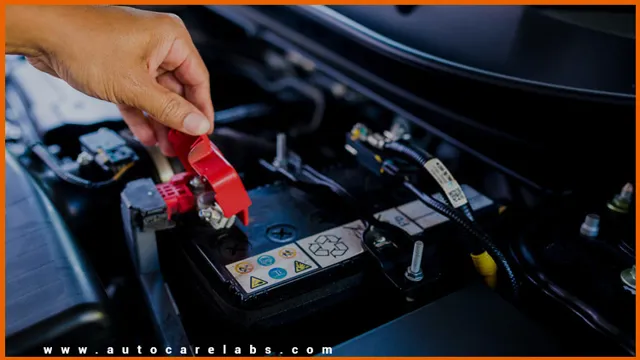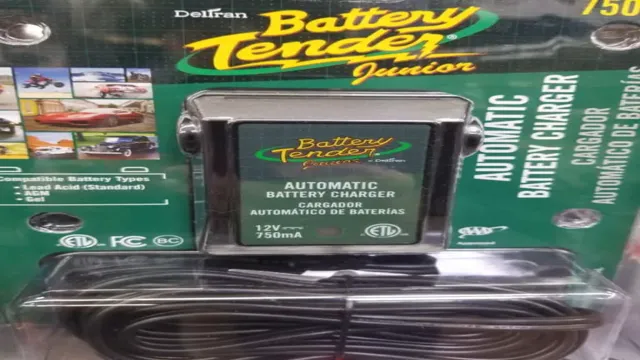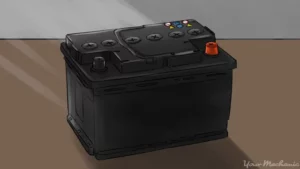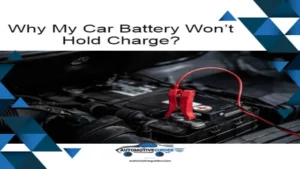Have you ever found yourself stranded in the middle of nowhere with a dead car battery? It’s a frustrating and stressful situation that no one wants to experience. One of the most common questions asked by car owners is, “How long does it take to charge a car battery?” The answer to this question varies depending on several factors. Understanding these factors can help you determine how long you need to charge your car battery and prevent any future frustrations.
In this blog post, we will explore the various factors that affect your car battery’s charging time, so you can get back on the road quickly and safely.
Understanding Your Car Battery
As a car owner, you may have been wondering how long to leave your car battery charger on to ensure maximum battery life and performance. The answer to this question depends on several factors, including the type of charger you are using, the type of battery, and the desired charging time. If you are using a smart charger, it will automatically stop charging when the battery is fully charged, so you do not need to worry about overcharging.
However, if you are using a manual charger, it is recommended to charge your battery for no longer than 24 hours. Overcharging can cause the battery to overheat and reduce its lifespan. Therefore, it is essential to check the manufacturer’s instructions and follow the recommended charging time and procedures.
By taking good care of your car battery, you can enjoy a smooth and reliable ride on the road.
Battery Types and Capacity
Understanding the Different Types and Capacities of Your Car Battery is crucial for any car owner. There are three primary types of car batteries, including lead-acid, lithium-ion, and nickel-metal hydride. Each type has its unique characteristics, advantages, and disadvantages, making it suitable for specific vehicles and applications.
The capacity of a car battery refers to the total amount of electrical energy it can store and deliver. The battery’s capacity is measured in ampere-hours (Ah), and it varies from one battery to another. The higher the capacity, the longer your car battery can power your vehicle before requiring a recharge.
Consider factors such as driving habits, weather conditions, and electrical demands when selecting a car battery with the right capacity. Knowing the battery type and capacity of your car can help you make informed decisions when buying or maintaining your car battery and avoid unexpected breakdowns or damage.

Factors Affecting Battery Life
When it comes to understanding your car battery, it’s important to know the factors that can affect its lifespan. One of the biggest factors is the weather. Extreme temperatures, both hot and cold, can take a toll on your battery.
Another factor is the age of the battery. Over time, batteries can lose their ability to hold a charge and will need to be replaced. The way you drive can also impact your battery life.
Frequent short trips or stop-and-go driving can put extra strain on your battery, causing it to age faster. Additionally, the type of vehicle you have can make a difference. Cars with high-tech features and accessories, like heated seats or an entertainment system, can drain the battery faster than those without.
By understanding these factors, you can take steps to extend the life of your car battery and avoid unexpected breakdowns on the road.
Charging Your Car Battery
When it comes to charging your car battery, you may be wondering how long should you leave the charger on for optimal results. The answer is not a one-size-fits-all solution as the time needed to fully charge your battery depends on various factors such as the charger’s amperage, the battery’s size, and its current state of charge. Generally speaking, a car battery charger can take anywhere from 4 to 12 hours to fully charge a battery depending on the above factors.
It’s important to remember that overcharging your battery can cause damage, so it’s crucial to monitor the charging process regularly and disconnect the charger once the battery is fully charged. If you’re dealing with a dead battery, you’ll need to charge it for a longer duration. A larger battery will require more time than a smaller one to complete the charging process.
Additionally, a battery that has lost its charge completely takes longer to charge fully compared to one with a partial charge. Therefore, it’s essential to read the manufacturer’s instructions on the charger you’re using and ensure you charge your battery according to these specifications. Remember to never rush the charging process, as a slow and steady charge helps maintain your battery’s longevity and performance.
In conclusion, there’s no set time for how long you should leave your car battery charger on. The battery size, current state of charge, and charger amperage will dictate the time it takes to fully charge your battery. Monitoring the charging process regularly and disconnecting the charger once the battery is fully charged is crucial to prevent overcharging.
Additionally, always check the manufacturer’s instructions before charging your battery to avoid damaging your car battery.
Pre-Charge Preparation
Charging your car battery is an essential task that you shouldn’t overlook. Before you begin, it’s important to prepare your battery for the charging process. This means that you should do your best to remove any existing corrosion or dirt from your battery terminals.
You can accomplish this by using a wire brush, a bit of baking soda, and some water. Once your battery is clean, you can begin the charging process. Your charger should be set to the correct voltage for your battery, and you should connect the positive cable to the appropriate battery terminal.
Be sure to connect the negative cable to a suitable grounding point as well. It’s crucial to follow these steps precisely to avoid causing damage to your car battery. Charging your car battery may seem like a daunting task, but it’s essential to prolong its lifespan and ensure that your vehicle is operating efficiently.
Using a Battery Charger
Charging your car battery is an essential part of vehicle maintenance. One of the easiest ways to charge your car battery is to use a battery charger. Battery chargers come in different types, but essentially they all work the same way.
The charger is connected to the battery, and it sends a constant current of electricity into the battery until it reaches its maximum charge. This typically takes a few hours, during which time it’s important not to drive your car, so the battery can fully recharge. It’s important to use the correct charger for your car battery and to follow the manufacturer’s instructions carefully.
By using a battery charger correctly, you can ensure your battery stays in good condition and your car remains reliable.
Charge Time Based on Capacity
Charging your electric car battery can be done in different ways, but the time it takes to charge will depend mainly on your vehicle’s battery capacity and how much power you use. Generally, the larger the battery capacity, the longer it will take to charge. For instance, a 60 kW battery will generally take around 10 hours to charge using a Level 2 EV charging station, while a 100 kW battery will take around 18 hours to charge using the same station.
To fully charge your battery within a short time, you can use a fast charger that delivers more power, allowing you to charge your car battery quickly. Moreover, some electric vehicles have a regenerative braking system that recovers energy lost during braking and deceleration, which can be added to the battery’s charge. Remember that the time it takes to charge your electric car battery also depends on the type of charger you use and the battery’s condition.
Therefore, it would be best to consult your car manufacturer’s recommendations before choosing the right charging method.
Safety Tips
When it comes to charging a car battery, safety should always be a top priority. One question that many people often ask is how long to keep the car battery charger on. The length of time it takes to fully charge a battery depends on several factors, including the type of battery, the charger’s amperage rating, and the battery’s current state of charge.
Typically, most chargers take between 4 to 24 hours to fully charge a car battery. However, it’s essential to ensure that the charger is not left on for too long as it can overcharge the battery and damage it permanently. Therefore, it’s a good practice to check the charger’s manual or contact the manufacturer to confirm how long to keep the battery charger on safely.
Another safety tip is to connect the charger correctly without touching the battery or other metal components to avoid the risk of electrical shock or short-circuit. By following these safety tips, you can prolong your battery’s life and prevent any potential hazards.
Using Protective Equipment
Protective equipment is an essential component of maintaining safety in any workplace or activity that involves risk. Examples of protective equipment include helmets, gloves, goggles, and shoes. However, properly using protective equipment is crucial to its effectiveness.
Firstly, it is important to ensure that the equipment fits properly. Ill-fitting equipment can be uncomfortable and cause distraction, ultimately compromising safety. Secondly, it is important to maintain equipment regularly and replace it as necessary.
Old or damaged equipment can no longer provide adequate protection. Lastly, one should understand the limitations of their protective equipment and use it in conjunction with other safety measures. In summary, using protective equipment is critical for safety, but it must be used correctly to maximize its effectiveness.
Avoid Overcharging
When it comes to using and charging electronic devices, safety should always be a top priority. Overcharging your device may seem harmless, but it can actually lead to dangerous consequences such as fires or explosions. To avoid overcharging, it’s important to keep an eye on your device’s battery level and unplug it once it has reached 100%.
It’s also a good idea to use the charging cord and adapter provided by the manufacturer to ensure compatibility and avoid any potential damage to your device. Simply put, taking the extra few seconds to unplug your device can save you from a potentially risky situation. So be sure to prioritize safety and avoid overcharging your electronic devices.
Conclusion
In conclusion, the age-old question of how long to leave a car battery charger on is like trying to solve a Rubik’s cube – it’s tricky but it all depends on your approach. The best way to determine the ideal charging duration is to consult your manufacturer’s instructions, consider your battery’s capacity, and monitor the charge level regularly. But, ultimately, like a good relationship, it’s all about finding a balance – not too little, not too much – to ensure a healthy and long-lasting connection between your car and its battery.
Happy charging!”
FAQs
How long should a car battery charger be left on?
It depends on the type of battery charger and the battery’s charge level. In general, a trickle charger can be left on for several days or even weeks, while a fast charger should only be used for a few hours.
Can you leave a car battery charger on overnight?
Yes, but you need to make sure it is a trickle charger and not a fast charger. Leaving a fast charger on overnight can overcharge and damage the battery.
How often should you charge a car battery?
It depends on how often you use your car and how long it sits without being used. In general, it is recommended to charge your battery once a month to keep it healthy.
How do you know when a car battery is fully charged?
You can use a multimeter to measure the battery’s voltage, or some chargers come with an indicator that shows when the battery is fully charged.
Can overcharging a car battery damage it?
Yes, overcharging can cause the battery to overheat and damage the internal components. It can also shorten the lifespan of the battery.
What is the difference between a trickle charger and a fast charger?
A trickle charger charges the battery slowly over a long period of time, while a fast charger charges the battery quickly but can only be used for short periods.
Can you charge a dead car battery?
Yes, but it may take longer to charge and you may need to use a specialized charger for deeply discharged batteries. It’s also important to check for any damage to the battery before attempting to charge it.






